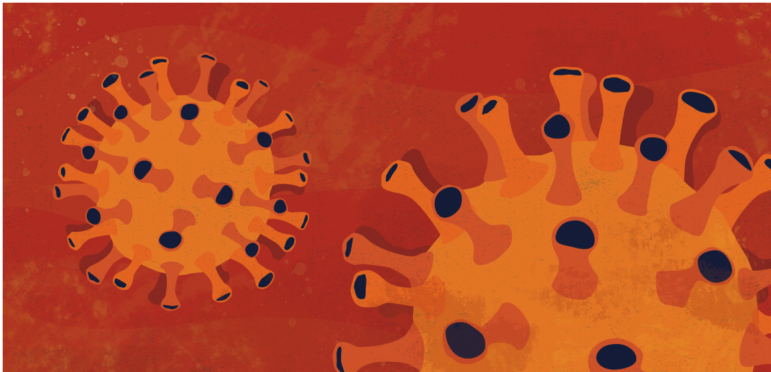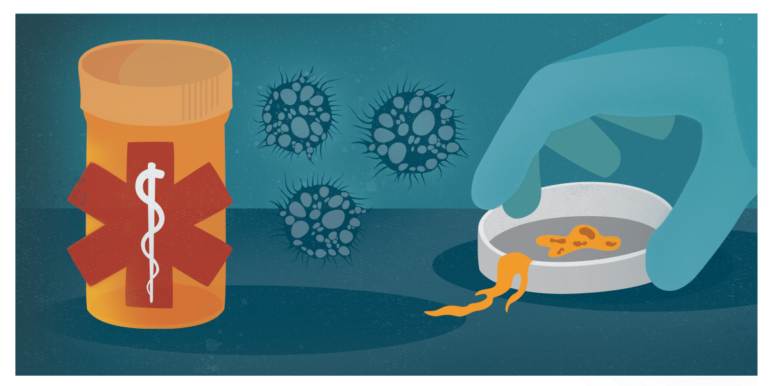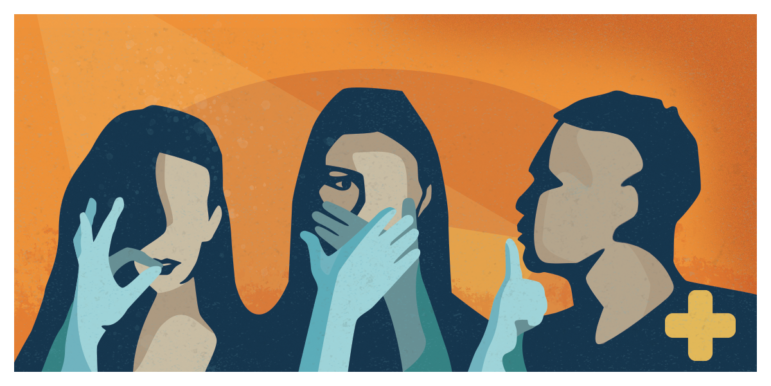

Health and Medicine Guide: Preface
Read this article in
Guide Resource
Investigating Health and Medicine
Chapter Guide Resource
Health and Medicine Guide: Preface
Chapter Guide Resource
Health and Medicine Guide: Introduction
Chapter Guide Resource
Health and Medicine Guide: Chapter 1
Chapter Guide Resource
Health and Medicine Guide: Chapter 2
Chapter Guide Resource
Health and Medicine Guide: Chapter 3
Chapter Guide Resource
Health and Medicine Guide: Chapter 4
Chapter Guide Resource
Health and Medicine Guide: Chapter 5
Chapter Guide Resource
Health and Medicine Guide: Appendix
COVID-19
Investigating health care is complex and challenging. Reporting in this field means reading lengthy documents and getting well-acquainted with medical jargon. Numbers and statistics are also part of the game. Although the learning curve can be steep, in this specialized area of investigative journalism you’ll never run out of stories. Truly global, it’s compelling and engaging. Still, suddenly becoming a medical investigative reporter, as many have had to do during the COVID-19 crisis, can be frustrating and full of pitfalls. This guide will provide reporters with the basic knowledge they need to dig deeper into many aspects of COVID-19, a complex area of reporting, as well as other public health issues which can be equally challenging. We start with a few brief tips and tools for better reporting on COVID-19.
COVID-19 Statistics
First of all, keep in mind that COVID-19 is the name of the disease caused by the Coronavirus SARS-CoV-2. In this guide, for the sake of keeping it simple, we are referring to the pandemic as COVID-19. Remember that any number makes sense only if put in context. For example, before suggesting that a COVID-19 metric or statistic is unusual or extraordinary, make sure to find out what a normal metric would be in the context of a viral infection, or its potential consequences for a patient’s health, or the way a symptom is normally addressed in any given hospital setting. Providing context is the only way to assess whether a phenomenon has really never been seen before, or is common in the world of health care.
GIJN has compiled official and unofficial sources of COVID-19 data. An additional and valuable source for COVID-19 data is Our World in Data’s COVID-19 statistics and research landing page. For Europe, EuroMOMO is an excellent source that offers insight and hints for many investigations even if you’re not reporting on Europe. Remember that many factors play a role in determining how data is collected and filed, and there are many different approaches and confounding factors involved.
Stick to the Best Available Scientific Evidence
The World Health Organization (WHO) has a website listing published studies on COVID-19. As you’ll discover from reading this guide, there are major differences among the studies in terms of design and significance. Also, this global crisis is producing a huge volume of research, published at breakneck speed. Most of these studies are not going through the usual process of review and many are observational, which do not allow us to come to reliable conclusions. In a nutshell, there is a lot of noise at the moment in the world of medical research, and it can be difficult for a journalist who doesn’t specialize in this field to make sense of it.
To make sense of what’s going on, we recommend the Evidence-Based Medicine approach — a methodology that uses the best current research to evaluate patient care. The Oxford University Centre for Evidence-Based Medicine (CEBM) has a COVID-19 Evidence Service which publishes rapid reviews and analysis using some of the most solid methodologies available. On this website you will find accurate summaries, written in relatively plain language, on the best available evidence about many angles of COVID-19. Which are the reliable published studies on the benefits for the general population of wearing face masks? Where are we in terms of scientific proof for understanding the transmission mechanisms of the virus? What is the available knowledge about its mortality and the efficacy of this or that intervention? Evidence Service contributors are independent scholars who dig out, analyze, and summarize what we know, and don’t know, about the science on COVID-19.
Who’s the Expert?
Scientists from various fields of specialization speak publicly about COVID-19. But in medical science there are considerable differences among the many specialist areas of expertise. It’s a good idea to discuss COVID-19 with infectious disease epidemiologists and vaccine safety epidemiologists, as they possess expertise specifically in the spread and management of epidemics and pandemics.
Models Should Come with a Warning
Models are mathematical simulations that project possible outcomes, such as how many people are likely to become infected from a particular virus over a given period of time. As scholars Carl Heneghan and Tom Jefferson put it in their piece Modelling the Models: “All models, be they prospective or retrospective, if they are based on scientific principles have substantial uncertainty as to their starting point and are incompatible with oracle-like statements of certainty.” Their level of reliability depends on many factors, especially by the data that informs them. Early COVID-19 models were developed at a time when little data was available. Moreover, epidemics are non-linear and rather chaotic, making it even more difficult for any model to be predictive of what is going to happen. All these limitations mean that all models should come with a warning, and if you’re using them for your journalism, you should carefully consider all the potential confounding factors and methodological weaknesses.
Beware of Media Reporting about Health Claims
Reports in the media may be flawed, are often not evidence-based, and much of the time rely on government and industry press releases. This guide deals extensively with how to independently assess research claims and frequently cites the work of HealthNewsReview.org, which has experience in appraising health and medical claims as they are published by the media. HealthNewsReview.org is doing outstanding work during the COVID-19 pandemic. It often focuses on the media landscape in the United States, but its key findings apply to all countries, and it can be a great inspiration for your journalism.
Beware of Oversimplification
Nothing is straightforward or simple in the current global situation. Be especially skeptical about information influenced by industry or relayed by governments. Take the time to independently assess the evidence, cross-checking the information, and bearing in mind that conflicts of interest and complex agendas are ubiquitous in the field of health care. Comparing countries can be a difficult exercise and one prone to pitfalls, as differences and confounding factors might play a relevant role. If you need to compare, make sure to adjust the comparison for multiple factors, such as average lifespan, which often differs from one country to another — an issue that is especially important with COVID-19 as most recorded death cases have been of the elderly. Also, consider that countries use different definitions for COVID-19 cases and deaths.
Don’t Forget Health Issues Besides COVID-19
All public health interventions, medical or non-medical (such as physical distancing and wearing face masks), come with consequences. Make sure to examine the evidence on both the benefit and the harm of any intervention your government may introduce in the framework of COVID-19. Are there adverse effects to be expected, and are they transparently communicated to the public? Also, remember that in public health, long-term and all-cause or overall mortality are more important than short-term data which will be revised frequently as issues are clarified.
In addition, it may seem that COVID-19 is the only health issue at the moment. However, many unattended medical needs are part of the global public health picture. Billions of people worldwide lack access to basic hygiene, primary health care, and essential medicines, and in many fields affordable, safe, and effective treatments are not available. Some of these health issues have become worse as the focus has shifted to COVID-19. Also, lockdowns and other restrictions have produced an unprecedented disruption to health systems, many of them going from bad to worse; access to vaccines in developing countries is only one example. If the COVID-19 crisis has shifted the focus of journalists and editors to a single public health issue, it is important to look at other medical issues that are having a significant impact.
When Reporting about COVID-19 Vaccines and Drugs, Be Extra Cautious
First you need to get up to speed with the science relating to drugs and vaccines. Make sure you understand the fine balance between benefits and harms, and how regulatory authorities, scientific studies, and monitoring systems work; we’ve rounded up the necessary resources to support that understanding in this guide. For example, a very good resource is the Brighton Collaboration, a network of vaccine safety specialists independent from the pharmaceutical industry. Also, these tips put together by Journalist’s Resource are helpful when reporting on COVID-19 vaccines:
- Reporters must understand what the various levels of clinical trials can — and can’t — tell us. Be wary of announcements about scientific data made through press releases rather than academic journal articles.
- Let your audience know now they could experience at least some mild side effects from COVID-19 vaccines.
- Explain to audiences the demographics of the pools of patients used to test vaccines.
- Help your audience understand the limits of what’s known about vaccines.
- Build a network of sources, especially the kind who can walk you through study data.
Learn from the Past
 Although the dominant narrative in 2020 suggests that the world is facing a new and unprecedented medical emergency, lessons have been learned from hundreds of years of medicine, health care, and epidemiology. Get to know more about routines and protocols in health care: How are patients with respiratory diseases normally treated in intensive care units? Is it standard to use mechanical ventilation with elderly people? How often and for how long do complications from other viral infections affect a patient after hospital discharge? Get knowledgeable about guidelines and routines, and compare the usual standards of care with what is happening with COVID-19. Don’t fall for the hype, and don’t forget that media and government messages have been emotionally charged throughout this crisis; as investigative journalists we should try to keep a cool head.
Although the dominant narrative in 2020 suggests that the world is facing a new and unprecedented medical emergency, lessons have been learned from hundreds of years of medicine, health care, and epidemiology. Get to know more about routines and protocols in health care: How are patients with respiratory diseases normally treated in intensive care units? Is it standard to use mechanical ventilation with elderly people? How often and for how long do complications from other viral infections affect a patient after hospital discharge? Get knowledgeable about guidelines and routines, and compare the usual standards of care with what is happening with COVID-19. Don’t fall for the hype, and don’t forget that media and government messages have been emotionally charged throughout this crisis; as investigative journalists we should try to keep a cool head.
















